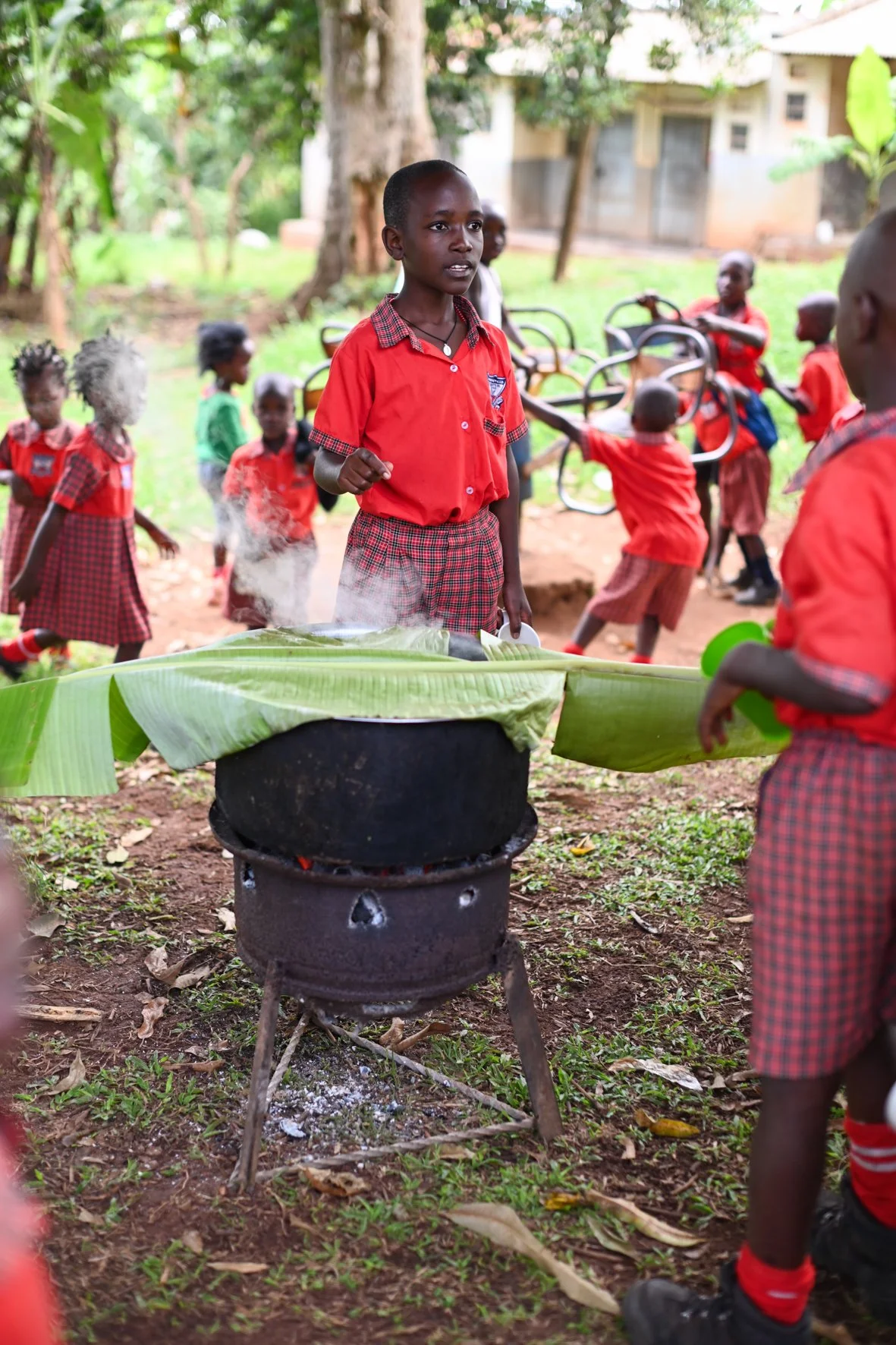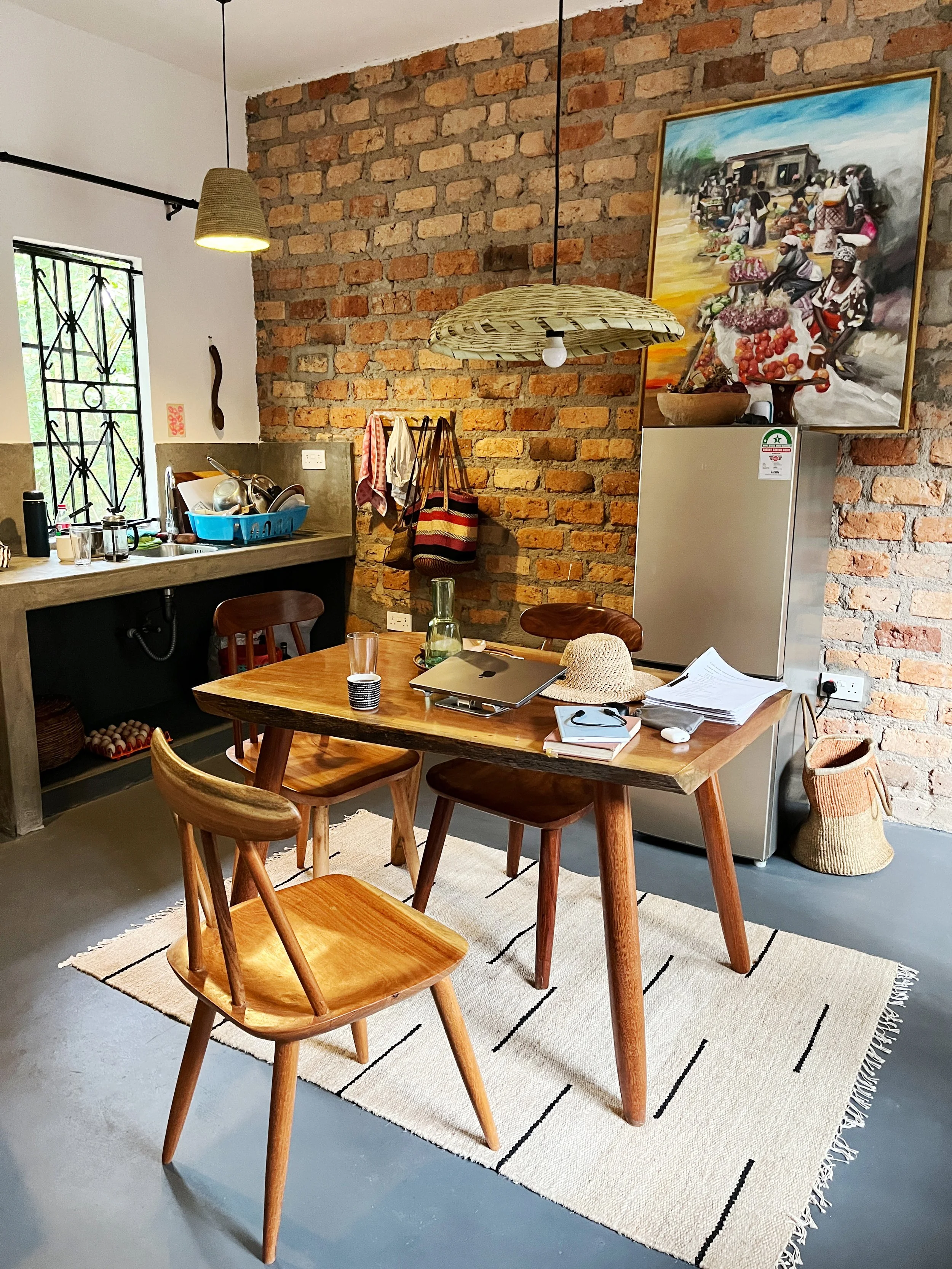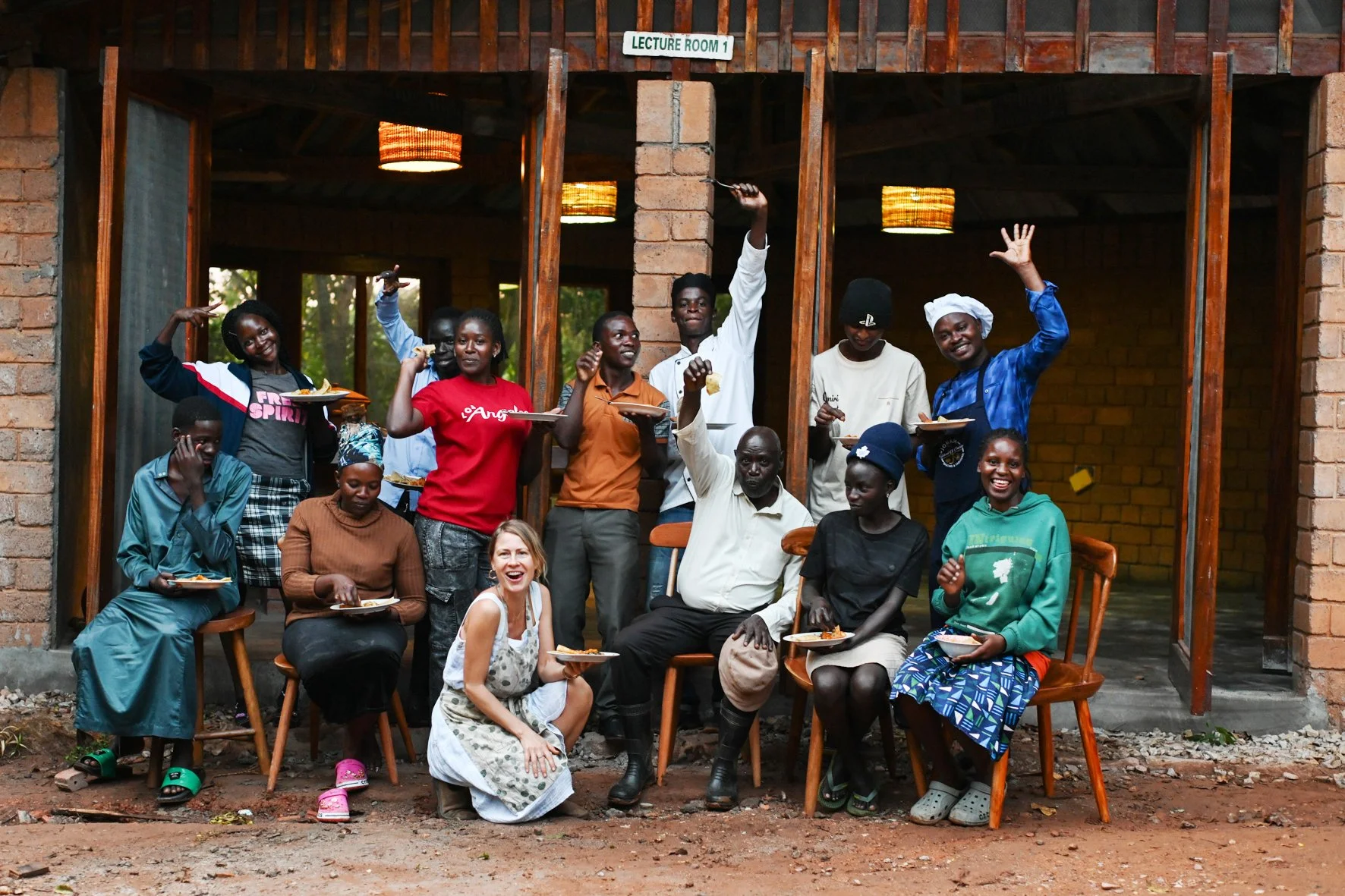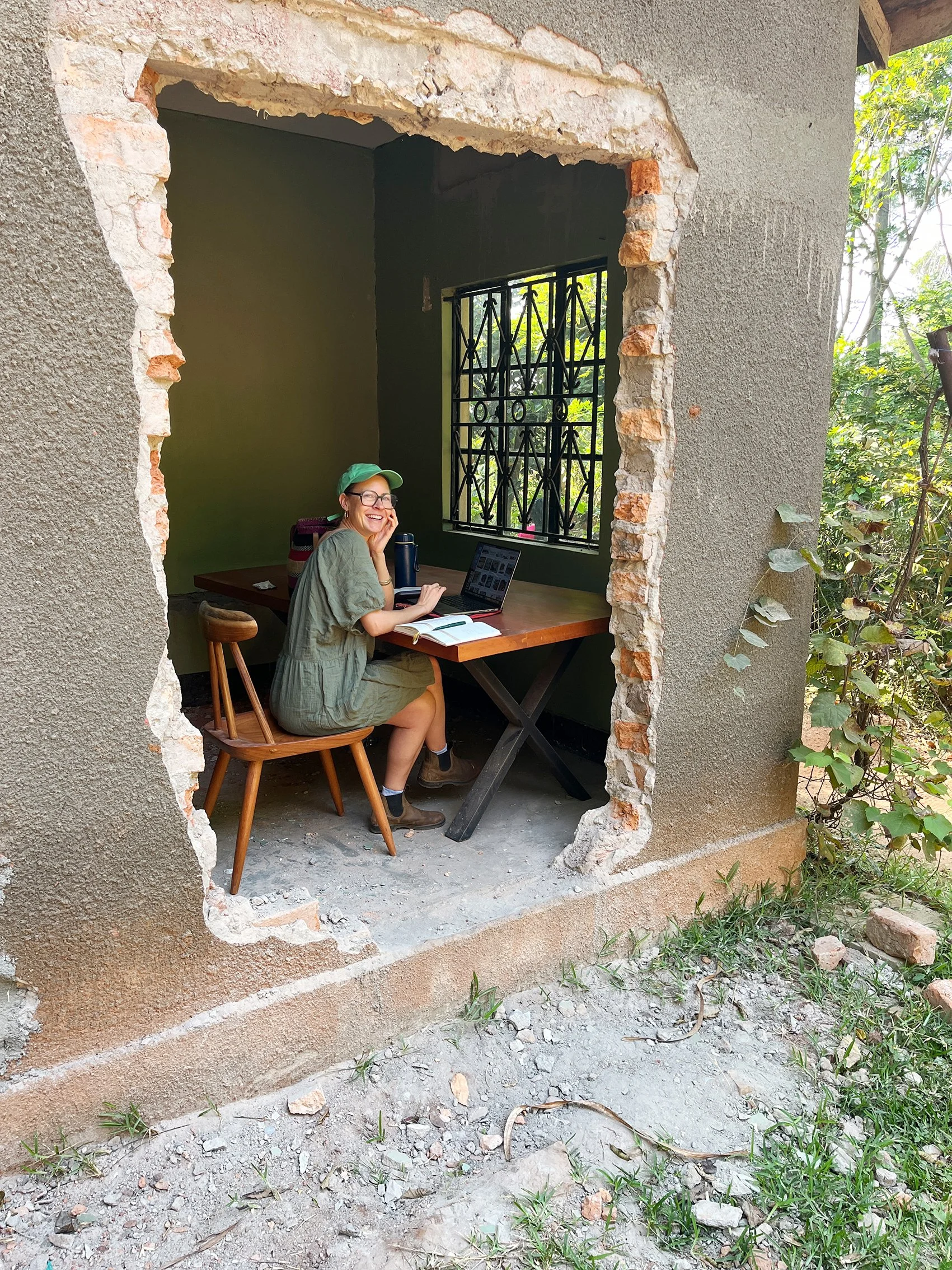Officially Blooming – From Soil to Plate
I’m writing to you from my new home—a space I somehow manifested, attracted, or whatever word fits best. I now live on the property of RUCID Organic College in Mityana, just a 10-minute drive from Mityana town. My apartment is simple but inspiring: a kitchen with an open brick wall, a bedroom with a big window overlooking the garden, and—luxury!—a proper shower, sink, and mostly running water. We repurposed two former guest rooms to create this space.
It’s connected to a small complex where I’m gradually renovating four guest rooms and a small office, as the budget allows. In the courtyard, a calabash tree takes center stage. Many locals ask, “What is that tree?” It produces fruits that can be turned into wine or used as bowls, but I’m sure there’s more to discover. This space is slowly becoming a place where we can host experts, students, and visitors to learn and exchange knowledge.
Privacy? Not much. In the mornings, students garden just meters from my window. My kitchen doubles as my office, where people come and go, asking questions and discussing plans with Stuart (the college manager) and Chef Kalefu, my first BODY&SOIL team member. I love it—this is exactly how it’s supposed to be.
That’s not to say I’m floating on clouds. Some nights, I wake up thinking through funding ideas and solutions, wondering what I might be missing. But I’m incredibly proud of what we’re creating—on nothing more than a tiny budget. Without teamwork, I don’t know where I’d be. That’s how I know this vision—linking soil and body health—is meant to be.
I recently read a quote that goes something like this: ‘When you feel like you've given everything and don’t know how to go on, that’s exactly the moment when you shouldn’t give up – because the wind is about to change.’ That’s exactly how I feel right now – and I’m letting go of the sails.
This Month’s Highlights
For those who don’t follow my Instagram, here’s a quick recap of our progress:
1. A New Energy-Saving Kitchen
Last Thursday, we inaugurated our kitchen in the newly renovated BODY&SOIL classroom. With our students, we harvested from the garden and cooked jackfruit curry, sautéed blackjack with garlic and lime, and chapati with herbs and spices. Delicious—but more than that, it opened students’ minds to the potential of their gardens, the health benefits of their crops, and how these ingredients can reach local markets. This session will now be part of their weekly curriculum, and soon, we’ll introduce nutrition courses for the community, city dwellers, and maybe even tourists.
But this journey is about so much more than just cooking. It’s about tackling climate change, food insecurity, and malnutrition through a practical, holistic approach.
If you tell someone to grow crops that are good for the soil and their health but don’t show them how to cook them, why would they?
You wouldn’t buy vegetables at the supermarket if you didn’t know how to prepare them, right?
2. First 'Soil to Plate' Nutrition Classes in Schools
I held my first nutrition classes at a local primary and secondary school, with the support of the RUCID staff and college students. The best part was sharing the teacher’s spot with Amos, a student who translated everything into Luganda like a pro. Together, we taught the kids that “weeds” like blackjack aren’t just for animal feed or as a natural iodine—they’re rich in vitamins, can be eaten as a green or brewed as a tea, and help heal ulcers, a serious issue here caused by nutrient deficiencies, stress, and a bacteria called Helicobacter pylori.
After class, we gathered blackjack from the fields and brewed tea with African basil. No sugar—well, some kids sneaked it in..;) Next time, we’ll dive deeper into agricultural and hygenic processing lessons, with RUCID Principal Elisha Ssebadduka and Director Samuel Nyanzi themselves leading the sessions. Part of our holistic approach is teaching the next generation how these plants can become products that improve both health and livelihoods.
At the secondary school we are working with, a teenager came up to me after class and said, “If I grow blackjack as a crop, no one in my community will buy it. Will you help us reach the market?” My response: First, let’s create a product that meets hygiene standards and tastes great—then we’ll figure out the next steps.
We’ve started by dividing students into three groups: agriculture, cooking and nutrition, and food processing. By the end of the year, they’ll have the opportunity to take a practical exam and earn an official certificate—something valuable, especially for those who might have to leave school, sometimes as early as primary level, due to a lack of financial means to pay school or food fees.
3. Empowering RUCID Students
Another incredible moment this month was seeing how eager our students at RUCID are to develop their skills in specific areas. We’re now working on a plan to introduce that every student graduates with a finished product—whether it’s organic fertilizer, healthy flour, cooking oil, or whatever they are passionate about. We will support them in making it happen and bring in experts where needed.
The other day, our two partner schools visited the college, and it wasn’t the teachers or staff who showed them around—it was our students. Everything we are doing with the schools, and soon with the communities, will involve the students as part of their curriculum and training, preparing them to teach others in the future.
Seeing the college so full of life was incredibly motivating and energizing for RUCID and for myself as well. As we continue, we’ll welcome even more school visits and institutions eager to get inspired and learn. This is what rural community development looks like.
The Bigger Picture
What’s the end goal? Scalable solutions that go beyond our college, schools, and farmers. We want this education to be documented and available both online and offline here at the BODY&SOIL headquarters at the college. And for the coming year, my personal wish is to see the BODY&SOIL Community Cookbook published—the first recipe, from soil to plate, is already written.
Someone recently reminded me, when I was feeling overwhelmed, “If you achieve just 1% every day, imagine what you can accomplish in a year.”
If you’d like to support—whether through a monthly contribution, a one-time investment, or by visiting to share your expertise—please reach out. Any help is a big help!
I hope this update inspires you. Change is possible, even if it’s just 1% at a time. Thank you!
With love from Uganda,
Maria



